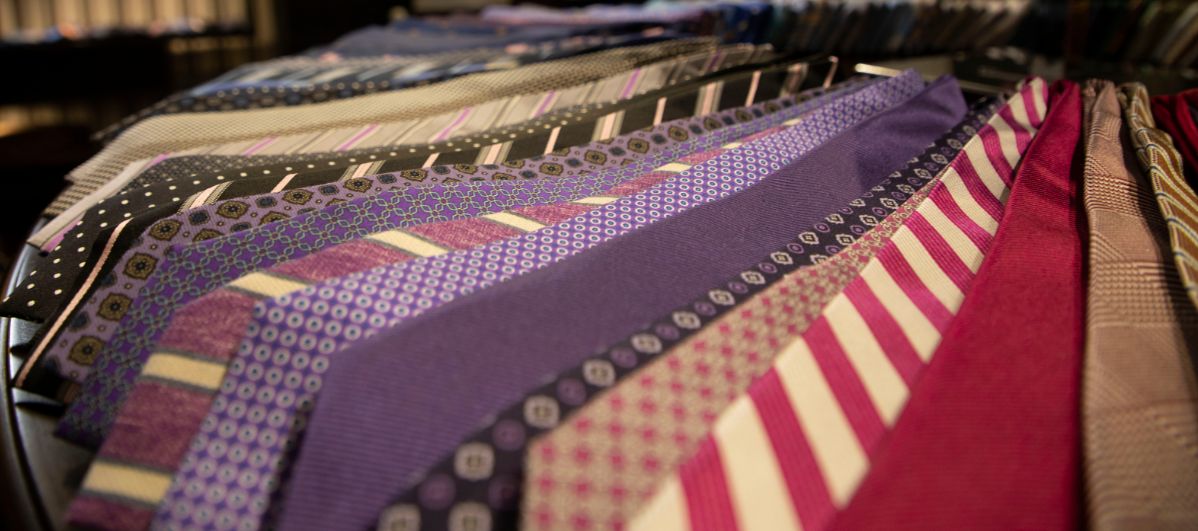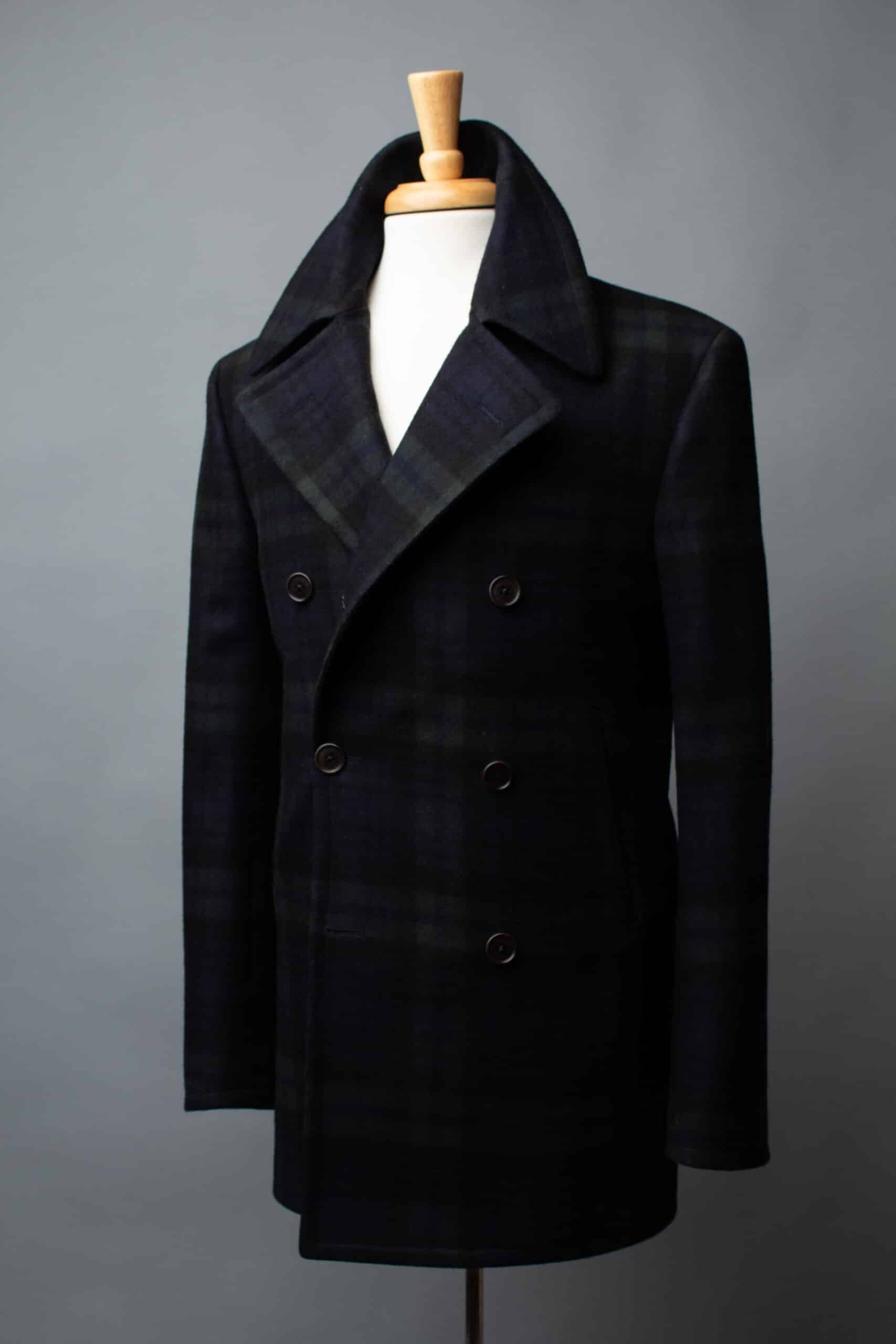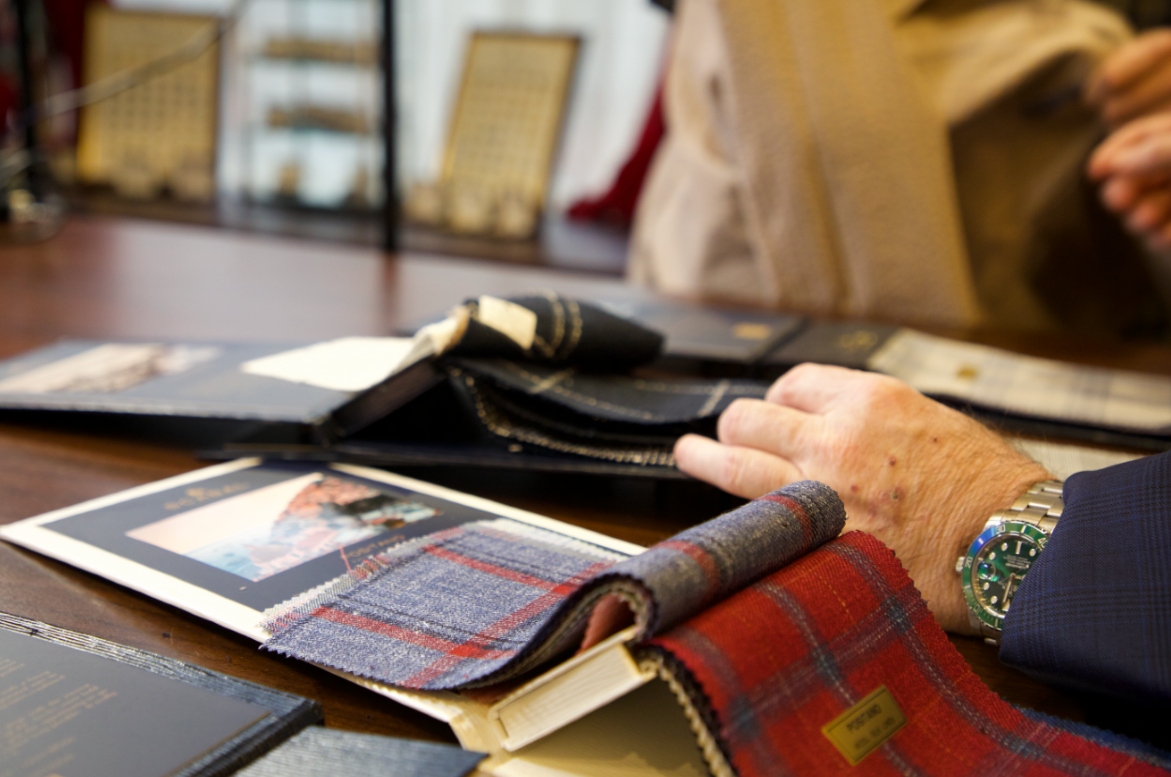As a company, we pride ourselves on many things, integrity being the most important. This is why we make it a point to educate and consult with our clients, not “sell” to them. In that vein, we’d like to address a rarely-asked but commonly-held question: what’s the difference between single and double-breasted suits?
Single Breasted & Double Breasted Setup & Terminology
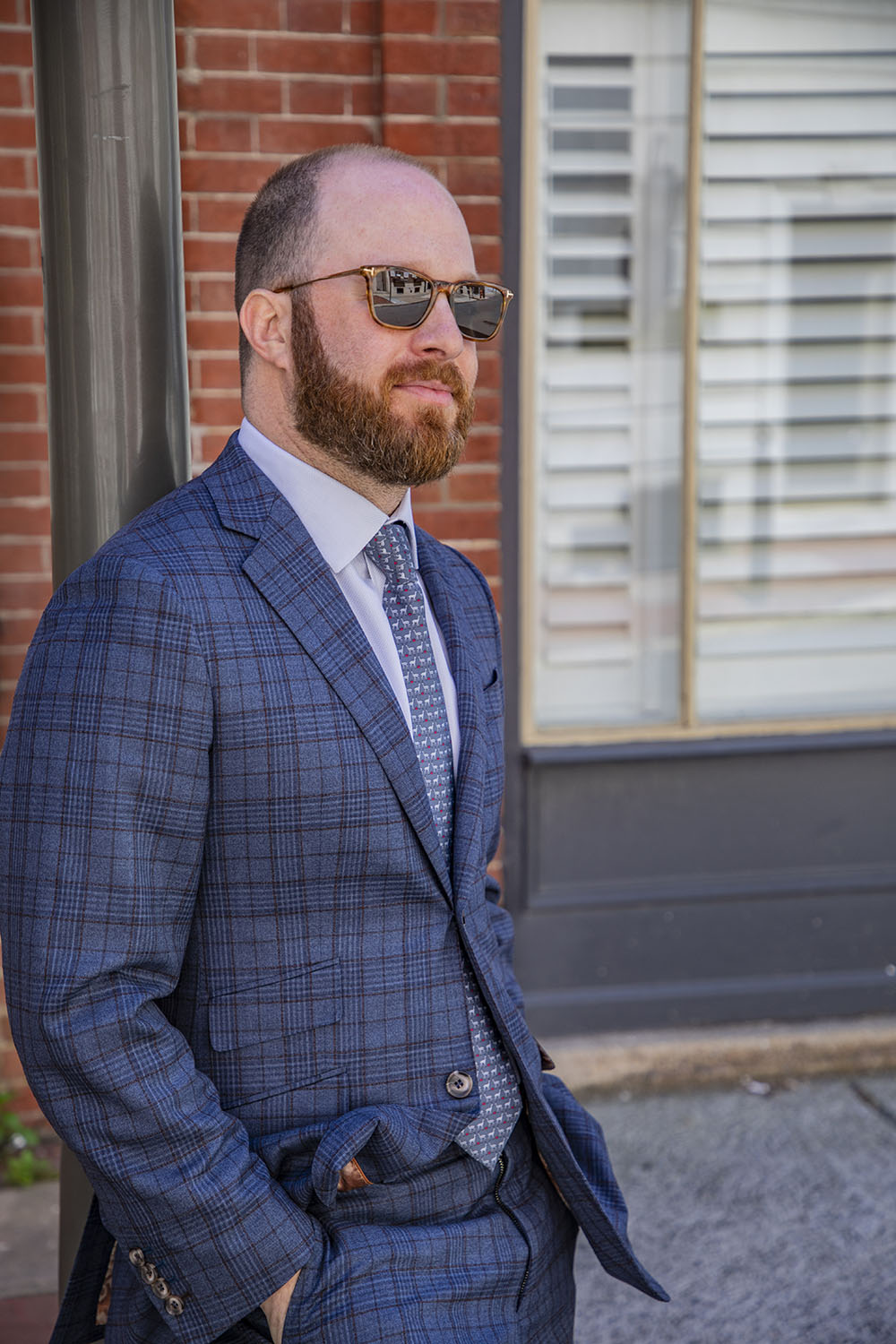
The terms “single-breasted” (“SB”) and “double-breasted” (“DB”) refer to a coat’s front button arrangement and its overall structure. All references to “right side” or “left side” are from the wearer’s perspective.
The first difference to note is that single-breasted jacket panels don’t overlap, but double-breasted jackets’ front panels do overlap. More on that below.
The next difference is that single-breasted jackets’ front buttons are aligned in a single row, whereas double-breasted jacket buttons are arranged in two rows. We typically make custom single-breasted coats with two buttons, but one-, three-, and even four-button SB models are available.
Double-breasted jackets typically take either four or six front buttons, with either one or two of them being functional, or “to button.” Some common styles are:
- 6×2: Read as “six on two.” Six total buttons, with two to button. Lapel rolls to the top left button.
- 4×2: Read as “four on two.” Four total buttons, with two to button. Lapel rolls to the top left button.
- 4×1: Read as “four on one.” Four total buttons with only one to button. Also referred to as a “Kent” model, popularized by the Duke of Kent in the early-to-mid-twentieth century.
Front Panel Overlap
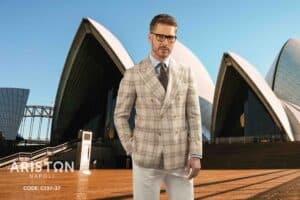 This may seem obvious, but every jacket has two front panels – left and right. The less obvious difference between single and double-breasted coats is how the front panels of the jacket overlap – or not – when you wear them.
This may seem obvious, but every jacket has two front panels – left and right. The less obvious difference between single and double-breasted coats is how the front panels of the jacket overlap – or not – when you wear them.
Single-breasted jackets’ front panels have minimal overlap – only about an inch at the buttoning point. Double-breasted jackets’ front panels are the total opposite: they must overlap to achieve the finished look. This in effect adds another layer to your front, which is one reason that DB models work extremely well for winter suits and overcoats. This is also a reason that double-breasted jackets must stay buttoned if you want to look good in one, especially when you’re standing.
Popularity, Formality & Versatility Comparison
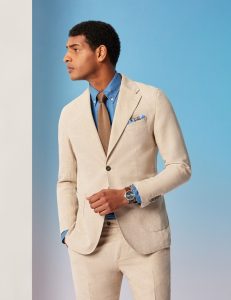 To be clear, either jacket model is permanently stylish. Still, there are important considerations around formality, versatility, and yes, popularity.
To be clear, either jacket model is permanently stylish. Still, there are important considerations around formality, versatility, and yes, popularity.
Let’s start with popularity. While both models have been around for over a century and are part of the permanent menswear canon, single-breasted models are far and away the more popular. There have been a few decades where DB suits regained some mainstream traction; the Interwar period and the 1980’s come to mind. Still, single-breasted models maintained their popularity even in those times.
For every double-breasted jacket we make at Henry A. Davidsen, we probably make one-hundred single-breasted ones. Why is this?
Formality, Versatility, & Image
In a word: versatility.
To paint with broad brushstrokes, double-breasted jackets are incrementally more formal than single-breasted ones. This is derived in part from their military history as many officer’s coats were double-breasted. From an image standpoint, the increased torso coverage a DB coat offers imparts on the wearer a regality that single-breasted jackets can’t quite match.
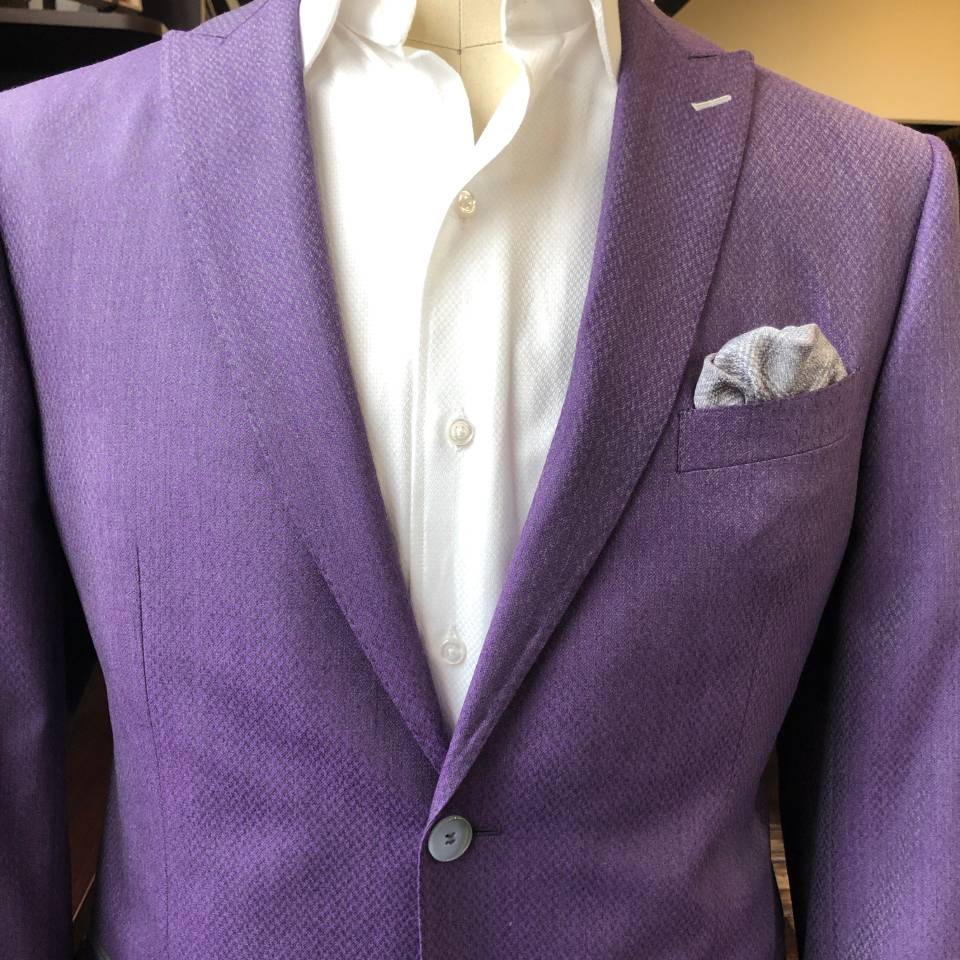 With that said, single-breasted jackets can hold their own in a formality contest and dress down to boot. You’ll see SB coats in applications as formal as tuxedos, but also as casual as jeans or even shorts. This versatility is the primary driver behind SB jacket’s enduring popularity.
With that said, single-breasted jackets can hold their own in a formality contest and dress down to boot. You’ll see SB coats in applications as formal as tuxedos, but also as casual as jeans or even shorts. This versatility is the primary driver behind SB jacket’s enduring popularity.
More Reading
We’ve got plenty of clothing and image content – we encourage you to peruse our blog and enjoy. If you’d like to talk about the possibilities for your own wardrobe, call us at 215-310-0219 or email us at info@henrydavidsen.com.

